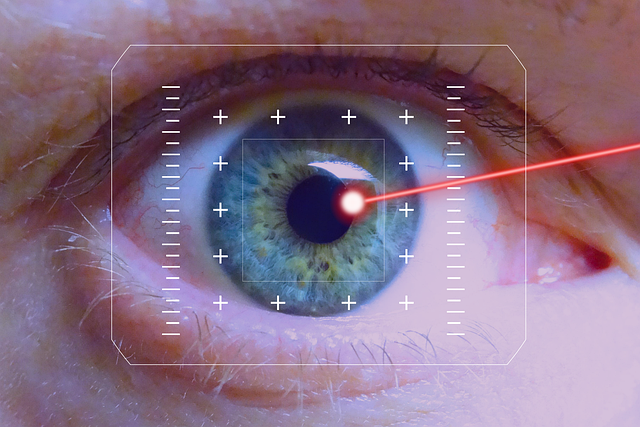Modern television sets and computer monitors no longer rely solely on raw pixel data from content sources. Instead, sophisticated image processing development drives every pixel to its fullest potential, transforming raw signals into rich, lifelike imagery. The journey from basic analog tuning to today’s high‑dynamic‑range, ultra‑high‑definition displays illustrates how iterative advancements in image processing have become the linchpin of visual quality in consumer electronics.
The Genesis of Digital Imaging in Display Devices
In the early days of television, image quality was limited by broadcast bandwidth, analog signal fidelity, and the inherent resolution of cathode‑ray tubes. When flat‑panel technology emerged, manufacturers faced new challenges: how to convert digital video streams into crisp, accurate pictures on LCD, OLED, and mini‑LED panels. The answer lay in image processing development—software and firmware that could analyze, adapt, and enhance pixel data in real time.
Key milestones include:
- Transition to 720p and 1080i formats in the 1990s, which required motion smoothing and edge enhancement.
- Introduction of 4K and 8K resolution standards, demanding powerful upscaling and noise reduction algorithms.
- Adoption of HDR10 and Dolby Vision formats, where dynamic range mapping became a critical image processing task.
Core Image Processing Techniques in Modern Displays
Image processing development in contemporary TVs and monitors relies on a set of foundational techniques that work in concert to deliver superior resolution and visual fidelity.
“The quality of every frame depends on how the processor interprets and manipulates pixel data before it reaches the panel.”
These techniques include:
- Spatial Filtering: Removes blockiness and aliasing while preserving edges. Advanced Gaussian and bilateral filters strike a balance between smoothness and detail.
- Temporal Upscaling: Uses motion vectors from preceding frames to predict and reconstruct high‑frequency content in higher resolutions.
- Color Space Conversion: Maps source color spaces (BT.709, BT.2020) into the display’s native gamut, ensuring accurate hue reproduction.
- Dynamic Contrast Adjustment: Enhances local contrast through per‑block luminance scaling, making dark scenes richer without blowing out highlights.
Resolution Enhancement Through Upscaling Algorithms
Upscaling remains a cornerstone of image processing development. While hardware scaling was once limited to simple nearest‑neighbor or bilinear methods, modern processors now employ machine‑learning‑based super‑resolution techniques.
Machine‑learning models, trained on millions of high‑resolution images, can infer missing pixel data with remarkable realism. They analyze textures, edges, and contextual cues to produce frames that feel natural, even when the source content is only 1080p. This is especially valuable for 4K and 8K displays that must deliver convincing clarity from lower‑resolution inputs.
In addition to AI upscaling, traditional interpolation techniques still play a role. Edge‑preserving interpolation preserves sharpness, while perceptual weighting accounts for human vision sensitivity to luminance changes.
High Dynamic Range (HDR) and Color Management
HDR content introduces a broader range of luminance levels, from deep blacks to bright whites. Effective image processing development must map these levels onto the display’s capabilities.
- Tone Mapping converts HDR signals into a perceptually uniform luminance curve that matches panel output limits.
- Color Grading ensures that color reproduction remains faithful across different brightness levels, preventing banding or loss of detail.
- Metadata Interpretation utilizes HDR metadata (static or dynamic) to adjust scene‑specific settings, such as peak brightness and black levels.
These processes are integral to achieving a truly cinematic experience on home displays.
Noise Reduction and Artifact Suppression
Video streams, especially those received over limited bandwidth or compressed with high ratios, often contain noise and compression artifacts. Advanced image processing development incorporates several noise suppression strategies.
Temporal denoising uses multiple frames to distinguish between transient noise and genuine image content. Spatial denoising applies adaptive filters that consider pixel neighborhoods to suppress random speckles while preserving edges.
Artifact suppression targets blocking, ringing, and color banding. Modern algorithms use frequency‑domain analysis to identify and mitigate compression ghosts, maintaining a clean, crisp picture.
Adaptive Picture Modes and User-Centric Customization
Manufacturers now provide dynamic picture modes that adjust processing parameters based on content type. For instance, a sports mode may boost motion clarity and contrast, whereas a movie mode might prioritize color accuracy and subtle gradations.
Image processing development facilitates this flexibility by exposing real‑time controls for sharpening, noise reduction intensity, and color temperature. Users can tailor the visual output to their preferences, and the processor adjusts its algorithms accordingly.
Future Directions in Image Processing Development
Looking ahead, several emerging trends promise to further refine display quality:
- Per‑Pixel HDR Scaling: Instead of applying a single tone‑mapping curve to the entire frame, future processors will perform per‑pixel HDR adjustments, leading to more nuanced brightness mapping.
- Hybrid Analog‑Digital Backlight Control: For OLED and mini‑LED panels, combining precise backlight modulation with dynamic local dimming will reduce blooming and enhance black levels.
- Edge‑Triggered Upscaling: New AI models will focus on edge regions first, reducing computational load while preserving perceptual sharpness.
- Real‑Time 3D Image Reconstruction: With the rise of VR and AR, processors may synthesize 3D views from single‑lens inputs, pushing the boundaries of spatial imaging.
These innovations hinge on continual progress in image processing development, leveraging both hardware acceleration and algorithmic sophistication.
The Role of Machine Learning in Next‑Generation Display Pipelines
Machine learning has transitioned from a research curiosity to a mainstream component of display pipelines. Convolutional neural networks trained on vast image datasets learn to predict high‑resolution textures, manage motion blur, and even infer depth information.
Such models are now embedded in consumer devices, enabling features like “AI Upscale” and “Smart Noise Reduction” that adapt to content without user intervention. As processing power grows, these algorithms will become increasingly lightweight, allowing for real‑time application on mobile devices and compact TVs.
Conclusion: The Symbiosis of Hardware and Software
The evolution of TV and monitor visualization is a testament to the power of image processing development. While display panels provide the canvas, it is the processor’s ability to analyze, enhance, and adapt pixel data that brings images to life. From the early days of analog tuning to the sophisticated AI‑driven pipelines of today, each advancement in image processing has lifted the standard for resolution, color fidelity, and overall visual experience.
As research continues and new display technologies emerge, the relationship between hardware capabilities and software ingenuity will only grow tighter. In the end, the clarity and richness we enjoy when watching a film or working on a design are the direct result of relentless innovation in image processing development—a field that will remain at the heart of visual media for years to come.




